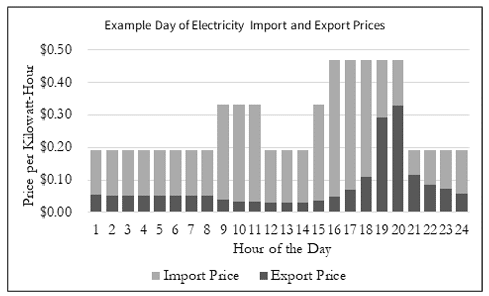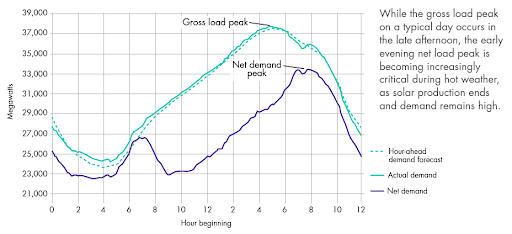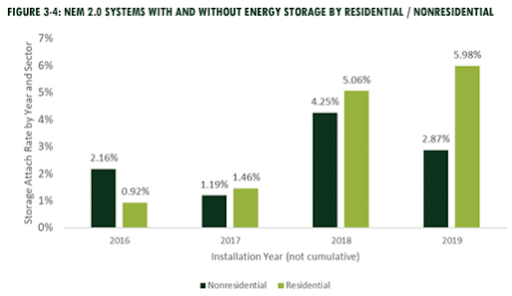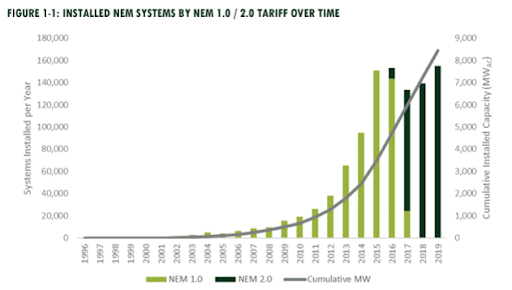What is California’s NEM 3.0, and will it be better than NEM 2.0?
California is on the eve of significant regulatory and market changes impacting the way businesses and residents who build their own solar power interact with their local utilities. After years of studying the cost & benefits of the net metering arrangements (known as NEM 2.0 or NEM2 for short), and arguing over the findings, the California Public Utility Commission (CPUC) has set its sights for voting on a new successor tariff– NEM 3.0 (or NEM3 for short). The stage is set for a vote around December 15, 2022.
Feel free to check out previous blogs by colleagues that have touched upon what net metering is as well as the regulatory history of net metering in California. This blog focuses on what NEM3 is and shares some insights on why it’s not going to be better than NEM2.
For California businesses currently considering the deployment of onsite renewables, you may want to think about prioritizing your effort and submitting an application to your utility prior to the Sunset Date– an important date as new solar systems applications filed prior to April 2023 have the option to utilize NEM2 for the following 20 years. Applications filed even one day late will be forced to use NEM3 immediately
What is NEM3?
As the name implies, it is the CPUC’s third version of the state’s Net Energy Metering (NEM) tariff rules. This version of the tariff is a product of the NEM2 Decision (D.16-01-044) made by the CPUC back in January 2016. That Decision committed the CPUC and its Energy Division to consider adjustments to the NEM2 successor tariff in the future. These NEM2 adjustments were published as a Proposed Decision (PD) on November 10, 2022 after several years of rulemaking. A vote to approve the PD could come as soon as December 15th.
How NEM3 Impacts CA Businesses ?
In essence, NEM3 is a revised tariff that reduces and recalibrates the amount California regulators are willing to financially incentivize you, as a customer of an investor-owned utility, to install renewable energy generation technologies like solar at your premises. In CPUC’s own words, “NEM allows customers who generate their own energy (“customer-generators”) to serve their energy needs directly onsite and to receive a financial credit on their electric bills for any surplus energy fed back to their utility (emphasis added).”
Key NEM3 takeaways for business owners;
- CPUC, their consultants and several key industry stakeholders firmly believe that the costs of the current NEM2 tariff far outweigh the beneficial impacts, so they are going to lower the financial incentive for deploying onsite energy,
- The financial incentives will push the current 3 to 5 year payback under NEM2 to over 9 years under the proposed tariff. This is bad news for customers who are almost (but not quite) ready to deploy onsite energy systems. The changes take away as much as 75 – 80% of the economic value from some systems
- They are shifting the incentive structure to better incentivize the addition of energy storage – which may benefit your business in the future.
It is safe to say that the current PD represents a dramatic reduction in financial incentives for deploying eligible onsite energy generation. The CPUC clearly believes current incentives under NEM2 are too costly to the grid as a whole and to non-participating ratepayers.
“A review of the current net energy metering tariff, referred to as NEM 2.0 found that the tariff negatively impacts non-participating ratepayers; disproportionately harms low-income ratepayers’ and is not cost-effective”
~ Proposed Decision (PD), November 10, 2022
The days of buying (importing) and selling (exporting) electricity at the same price under net metering are coming to an end in California. Under the new tariff structure, payments for exporting excess onsite production to the grid will be cut significantly and will be based on an hourly avoided cost basis as illustrated by the below example from the CPUC’s Appendix A of the PD.

This example of the Import/Export Pricing scheme also illustrates that the CPUC intends to make the successor tariff one that encourages a transition from a ‘solar only’ (or ‘generation only’) market to one of ‘generation paired with storage’. The CPUC intends to provide the market with strong price signals to use storage to shift exporting capacity to the early evening when solar production drops off with the setting sun and the grid is still experiencing high energy load demand. One only has to look at CAISO’s actual demand (gross load peak) contrasted to the grid’s net demand (net demand peak) in the illustration below to see that CPUC is placing their price signals to the broad 6 PM to 9 PM hours and more directly to the 7 PM to 8 PM time frame.

There is plenty of room for paired storage to add value to the grid. According to the 2019 Lookback Study, less than 6% of NEM2 residential systems and less than 3% of NEM2 non-residential systems are paired . As California continues to install more solar generation, both distributed and utility-scale, the disparity between daytime generation resources and grid system demand will grow without tapping into the capacity shift that storage can provide.

The CPUC claims it is modernizing the NEM tariff to meet California’s reliability and climate goals, to support the modern grid. However, the costs of storage currently create a roadblock to widespread adoption and this may linger during the early years under the NEM3 successor period.
The CPUC rightfully admits that net energy metering has helped California make significant progress toward meeting its climate goals. Their new approach to the stated ‘modern need’ is to address net demand peak. But the significant reduction in financial credits could negate the desired outcome. Today, NEM3 may very well slow the momentum in California’s rooftop solar market which leads the country with over 1 million installed systems representing approximately 12,000 Megawatts of generation. Time will tell if the new NEM3 tariff and it’s financial credits will continue to contribute to California moving toward its aggressive climate goals.
Keeping up with California’s net metering tariff rule making process has been challenging.
In following posts, we will continue to share insights on California’s NEM3 tariff and the implications it has on you and your plans for installing onsite renewable energy generation.

Some sites and resources you might find value in reviewing:
- The Proposed Decision – NEM 3.0 Tariff – November 10, 2022
- Proposed Decision for NEM 3.0 – Fact Sheet
- Modernizing California’s Net Energy Metering Program – Proposed Decision for Proceeding R.20-08-020
- CPUC’s Net Energy Metering Revisit website – Rulemaking (R.) 20-08-020
- Decision Adopting Successor to Net Energy Metering Tariff – NEM 2.0 – January 28, 2016
- Net-Energy Metering 2.0 Lookback Study, January 2021 – and a CPUC Summary of the Lookback Study
How VECKTA Can Help You Prepare for NEM3
The first step in preparing for the NEM3 changes is to understand how they impact the business case for onsite power at your sites. On some sites, the impact on economic returns is dramatic (up to a 80% loss in value in extreme cases!), while on others the changes will have little impact. The variance is driven by factors like your electric usage profile, local solar irradiance, and your electrical tariffs – these can be challenging to assess without the aid of sophisticated assessment software.
With NEM3 changes coming, California solar installers are preparing for an incredibly busy first quarter this coming 2023. The impact on you will be one of the following:
- If the changes mean you need to act quickly, you will need to seek quotes from qualified providers as soon as possible, to lock in grandfathering benefits of NEM2
- If the changes have only a marginal or no impact on your site’s potential, you may be better off waiting for the peak of demand to pass, in order to benefit from a quieter market (lower prices, more attention from suppliers)
How will you know which category you fall into? You could ask a solar provider … but chances are they are going to tell you that you need to act fast! Or you could seek out independent, solution-agnostic advice that puts your best interests at heart – and provides you with bespoke advice on what the impacts of NEM3 are going to be on your business. That’s where someone like VECKTA comes in!
VECKTA’s team can quickly, and at a low cost, assess the impact of NEM3 changes on your sites. Not only that; where your sites fall into the “move quickly” category VECKTA is the most effective resource to get your project in front of the best qualified solar installers in your region to get your system designed, your interconnection paperwork filed before the California Public Utilities Commission closes the door on NEM2 for good, and then built so that you can enjoy the benefits of onsite energy for years to come.